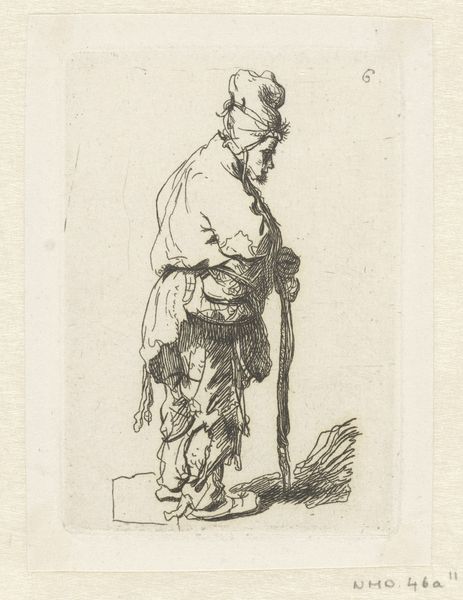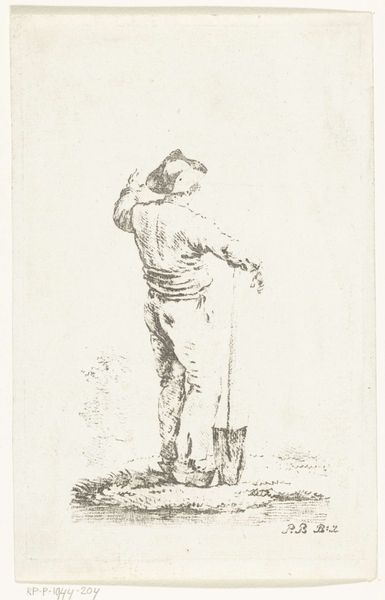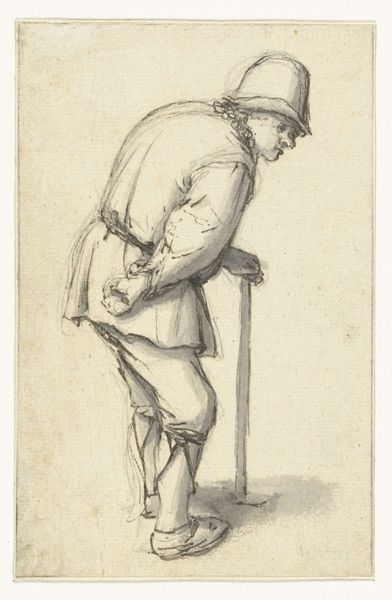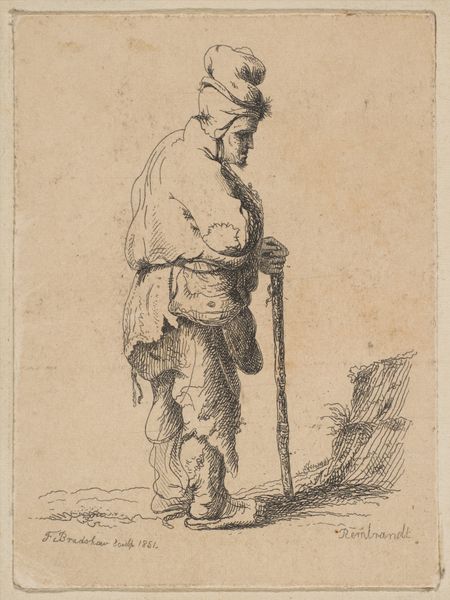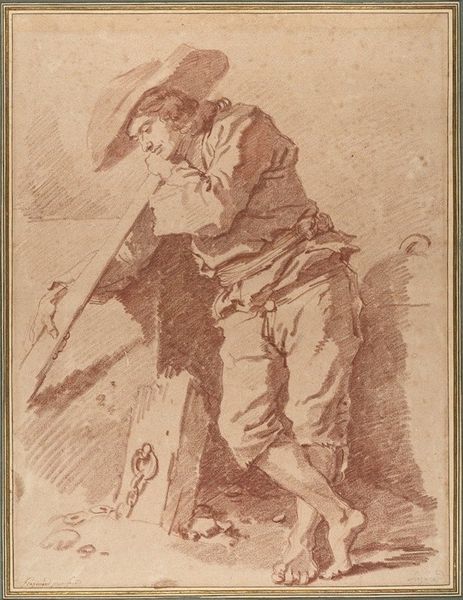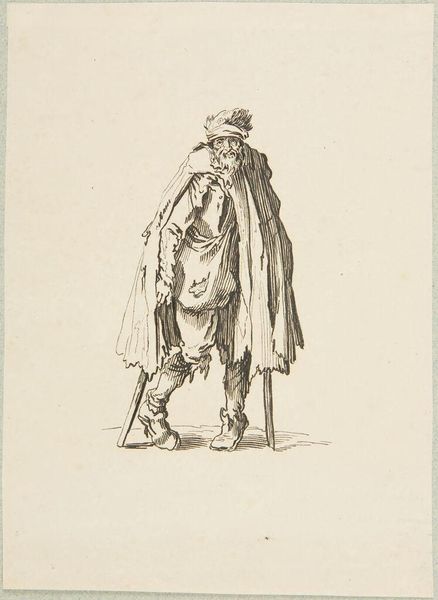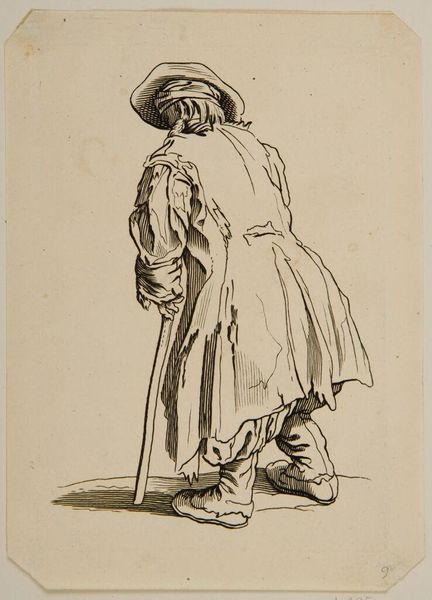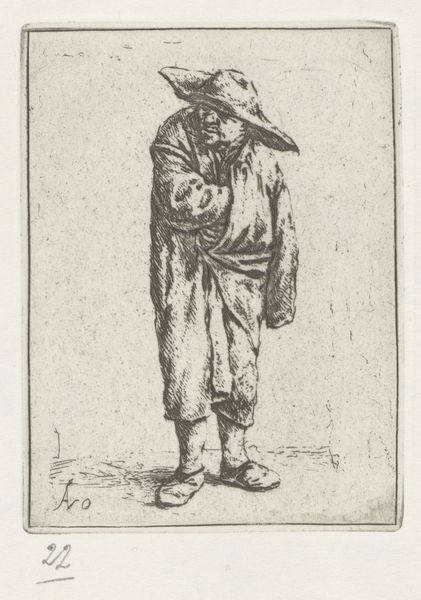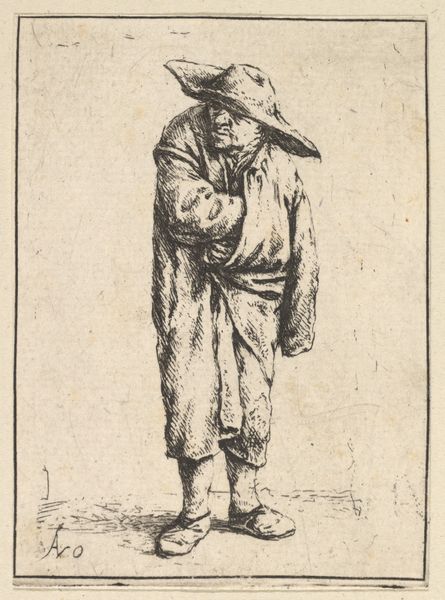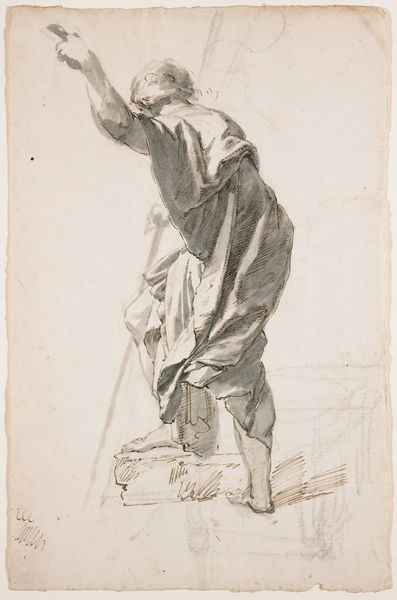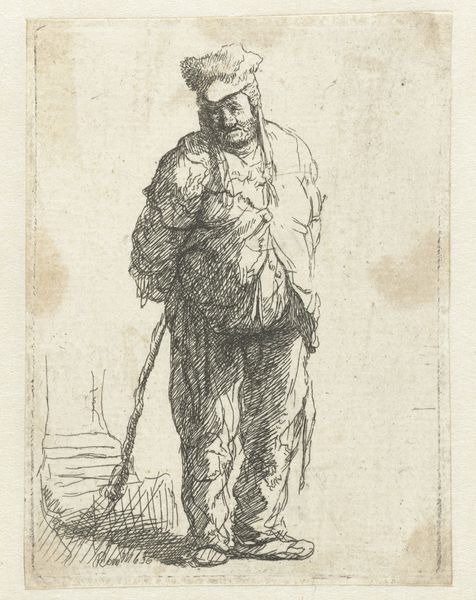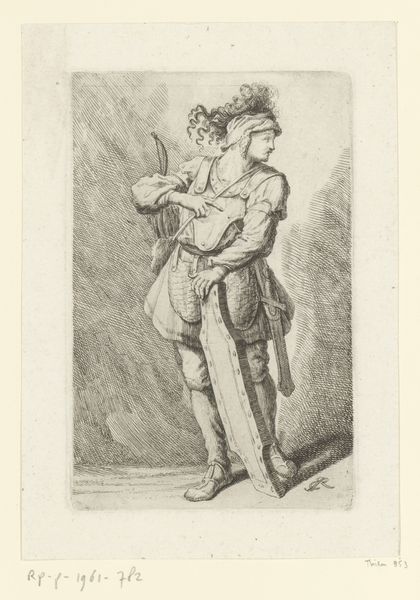
drawing, pen
#
portrait
#
drawing
#
pencil sketch
#
pencil drawing
#
romanticism
#
sketchbook drawing
#
pen
#
portrait drawing
#
pencil work
#
genre-painting
Dimensions: height 268 mm, width 185 mm
Copyright: Rijks Museum: Open Domain
Editor: Here we have Jordanus Hoorn's "Young Man Leaning on a Stone," dating from 1763 to 1833. It's a drawing, primarily in pen and pencil, with this wonderful reddish-brown tone. The young man seems contemplative, almost melancholic. How do you interpret this work? Curator: It’s interesting to consider this drawing within the context of the late 18th and early 19th centuries, a period of profound social and political upheaval. What do you notice about the young man's attire and posture? Editor: He seems to be of a certain class; his clothes are detailed and relatively refined. And the way he's leaning, it suggests a leisure unavailable to the working class. Curator: Precisely! Think about the Romantic movement rising during this time. This pose, this moment of quiet reflection, emphasizes individualism and a certain alienation. We see a burgeoning sense of self detached from communal or political action. How does this relate to wider power structures? Who gets to *feel* in this period? Editor: So you're suggesting his melancholy isn't just a personal feeling, but a reflection of broader societal shifts and access to privilege? Curator: Exactly. It's a glimpse into how identity and emotion were being shaped and, indeed, commodified. How does the medium contribute to that feeling, the very visible strokes? Editor: That’s fascinating. It’s like the rawness of the sketch exposes the constructed nature of even our most intimate emotions. Thank you for making me consider these historical complexities. Curator: It’s crucial to recognize art as a site where social anxieties and power dynamics are played out. Understanding that transforms how we view both the artwork and ourselves.
Comments
No comments
Be the first to comment and join the conversation on the ultimate creative platform.

